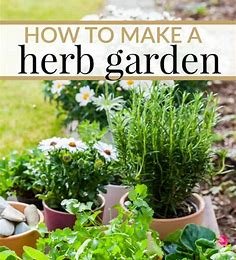Growing your own herbs and vegetables is a rewarding way to enjoy fresh, organic produce right from your garden or even indoors.

1. Choose Your Plants:
- Herbs: Basil, mint, parsley, cilantro, thyme, rosemary, and chives are popular and easy to grow.
- Vegetables: Lettuce, tomatoes, peppers, cucumbers, carrots, radishes, and spinach are great choices for beginners.
2. Select the Right Location:
- Sunlight: Most herbs and vegetables need at least 6-8 hours of sunlight per day. Choose a sunny spot in your garden or a south-facing window for indoor growing.
- Soil: Use well-draining soil that is rich in organic matter. You can buy potting soil or create your own compost.
3. Planting:
- Seeds or Seedlings: You can start from seeds or buy young plants (seedlings) from a nursery. Follow the planting instructions on the seed packet or plant label.
- Containers: If you’re growing indoors or in a small space, use containers with drainage holes. Herbs and small vegetables can thrive in pots.
4. Watering:
- Consistent Moisture: Keep the soil consistently moist, but not waterlogged. Water your plants in the morning to reduce evaporation and prevent diseases.
- Drainage: Ensure good drainage to avoid root rot. Use saucers under pots to catch excess water.
5. Fertilizing:
- Organic Fertilizer: Use organic fertilizers like compost, fish emulsion, or a balanced commercial fertilizer to provide essential nutrients.
- Frequency: Fertilize according to the needs of the plants, typically every 4-6 weeks during the growing season.
6. Maintenance:
- Weeding: Keep the garden free of weeds that can compete with your herbs and vegetables for nutrients.
- Pruning: Regularly prune herbs to encourage bushier growth. Remove dead or yellowing leaves from all plants.
- Pests: Monitor for pests and diseases. Use natural remedies like neem oil, insecticidal soap, or companion planting to deter pests.
7. Harvesting:
- Timing: Harvest herbs and vegetables when they reach the desired size and maturity. For herbs, regularly snip leaves to encourage growth.
- Technique: Use clean, sharp scissors or garden shears to cut herbs and vegetables to avoid damaging the plants.
8. Indoor Growing Tips:
- Grow Lights: If natural sunlight is insufficient, use grow lights to provide the necessary light spectrum for plant growth.
- Humidity: Maintain proper humidity levels, especially for indoor herb gardens. Mist the plants or use a humidity tray if needed.
9. Enjoying the Harvest:
- Use fresh herbs and vegetables in your cooking. The taste and nutritional value of homegrown produce are hard to beat!
Conclusion:
Growing your own herbs and vegetables can be a fun and rewarding experience. It not only provides you with fresh, healthy produce but also connects you with nature and can be a relaxing hobby.
